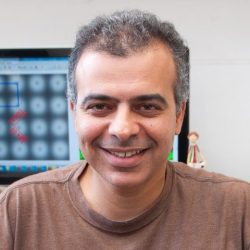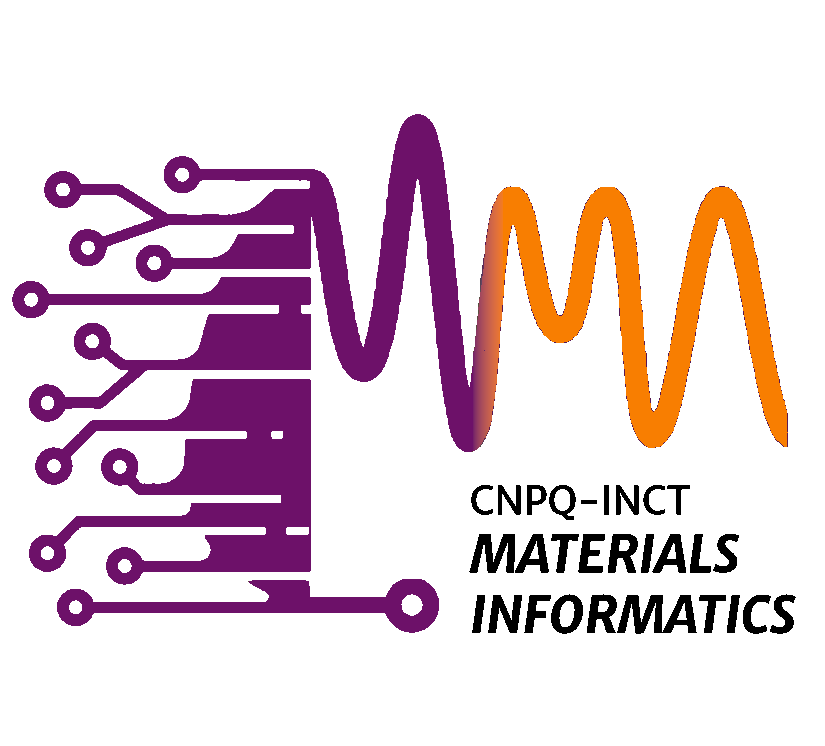
Publicações de Rodrigo Capaz
Benatto, Leandro; Mesquita, Omar; Pacheco, Kaike R. M.; Roman, Lucimara S.; Koehler, Marlus; Capaz, Rodrigo B.; Candiotto, Graziâni TMM−Sim: A Versatile Tool for Optical Simulation of Thin−Film Solar Cells Journal Article Em: Computer Physics Communications, pp. 109206, 2024, ISSN: 0010-4655. Resumo | Links | BibTeX | Tags: Optical Simulation, Refractive index, Software, Solar cell, Transfer matrix method Benatto, Leandro; Mesquita, Omar; Roman, Lucimara S.; Capaz, Rodrigo B.; Candiotto, Graziâni; Koehler, Marlus PLQ−sim: A computational tool for simulating photoluminescence quenching dynamics in organic donor/acceptor blends Journal Article Em: Computer Physics Communications, vol. 296, pp. 109015, 2023, ISSN: 0010-4655. Resumo | Links | BibTeX | Tags: Charge transfer, Energy transfer, Exciton, Organic semiconductor, Photoluminescence quenching, Software Benatto, Leandro; Mesquita, Omar; Rosa, João L. B.; Roman, Lucimara S.; Koehler, Marlus; Capaz, Rodrigo B.; Candiotto, Graziâni FRET–Calc: A free software and web server for Förster Resonance Energy Transfer Calculation Journal Article Em: Computer Physics Communications, vol. 287, pp. 108715, 2023, ISSN: 0010-4655. Resumo | Links | BibTeX | Tags: Energy transfer, Fluorescence, Förster radius, FRET, Organic semiconductor, Software2024
@article{BENATTO2024109206,
title = {TMM−Sim: A Versatile Tool for Optical Simulation of Thin−Film Solar Cells},
author = {Leandro Benatto and Omar Mesquita and Kaike R. M. Pacheco and Lucimara S. Roman and Marlus Koehler and Rodrigo B. Capaz and Graziâni Candiotto},
url = {https://www.sciencedirect.com/science/article/pii/S0010465524001292},
doi = {https://doi.org/10.1016/j.cpc.2024.109206},
issn = {0010-4655},
year = {2024},
date = {2024-04-16},
urldate = {2024-01-01},
journal = {Computer Physics Communications},
pages = {109206},
abstract = {The Transfer Matrix Method (TMM) has become a prominent tool for the optical simulation of thin−film solar cells, particularly among researchers specializing in organic semiconductors and perovskite materials. As the commercial viability of these solar cells continues to advance, driven by rapid developments in materials and production processes, the importance of optical simulation has grown significantly. By leveraging optical simulation, researchers can gain profound insights into photovoltaic phenomena, empowering the implementation of device optimization strategies to achieve enhanced performance. However, existing TMM−based packages exhibit limitations, such as requiring programming expertise, licensing fees, or lack of support for bilayer device simulation. In response to these gaps and challenges, we present the TMM Simulator (TMM−Sim), an intuitive and user−friendly tool to calculate essential photovoltaic parameters, including the optical electric field profile, exciton generation profile, fraction of light absorbed per layer, photocurrent, external quantum efficiency, internal quantum efficiency, and parasitic losses. An additional advantage of TMM−Sim lies in its capacity to generate outcomes suitable as input parameters for electro−optical device simulations. In this work, we offer a comprehensive guide, outlining a step−by−step process to use TMM−Sim, and provide a thorough analysis of the results. TMM−Sim is freely available, accessible through our web server (nanocalc.org), or downloadable from the TMM−Sim repository (for Unix, Windows, and macOS) on GitHub. With its user−friendly interface and powerful capabilities, TMM−Sim aims to facilitate and accelerate research in thin−film solar cells, fostering advancements in renewable energy technologies.},
keywords = {Optical Simulation, Refractive index, Software, Solar cell, Transfer matrix method},
pubstate = {published},
tppubtype = {article}
}
2023
@article{BENATTO2024109015,
title = {PLQ−sim: A computational tool for simulating photoluminescence quenching dynamics in organic donor/acceptor blends},
author = {Leandro Benatto and Omar Mesquita and Lucimara S. Roman and Rodrigo B. Capaz and Graziâni Candiotto and Marlus Koehler},
url = {https://www.sciencedirect.com/science/article/pii/S0010465523003600},
doi = {https://doi.org/10.1016/j.cpc.2023.109015},
issn = {0010-4655},
year = {2023},
date = {2023-11-24},
urldate = {2023-11-24},
journal = {Computer Physics Communications},
volume = {296},
pages = {109015},
abstract = {Photoluminescence Quenching Simulator (PLQ−Sim) is a user−friendly software to study the photoexcited state dynamics at the interface between two organic semiconductors forming a blend: an electron donor (D), and an electron acceptor (A). Its main function is to provide substantial information on the photophysical processes relevant to organic photovoltaic and photothermal devices, such as charge transfer state formation and subsequent free charge generation or exciton recombination. From input parameters provided by the user, the program calculates the transfer rates of the D/A blend and employs a kinetic model that provides the photoluminescence quenching efficiency for initial excitation in the donor or acceptor. When calculating the rates, the user can choose to use disorder parameters to better describe the system. In addition, the program was developed to address energy transfer phenomena that are commonly present in organic blends. The time evolution of state populations is also calculated providing relevant information for the user. In this article, we present the theory behind the kinetic model, along with suggestions for methods to obtain the input parameters. A detailed demonstration of the program, its applicability, and an analysis of the outputs are also presented. PLQ−Sim is license free software that can be run via dedicated webserver nanocalc.org or downloading the program executables (for Unix, Windows, and macOS) from the PLQ-Sim repository on GitHub.},
keywords = {Charge transfer, Energy transfer, Exciton, Organic semiconductor, Photoluminescence quenching, Software},
pubstate = {published},
tppubtype = {article}
}
@article{BENATTO2023108715,
title = {FRET–Calc: A free software and web server for Förster Resonance Energy Transfer Calculation},
author = {Leandro Benatto and Omar Mesquita and João L. B. Rosa and Lucimara S. Roman and Marlus Koehler and Rodrigo B. Capaz and Graziâni Candiotto},
url = {https://www.sciencedirect.com/science/article/pii/S0010465523000607},
doi = {https://doi.org/10.1016/j.cpc.2023.108715},
issn = {0010-4655},
year = {2023},
date = {2023-01-01},
journal = {Computer Physics Communications},
volume = {287},
pages = {108715},
abstract = {Förster Resonance Energy Transfer Calculator (FRET−Calc) is a program and web server that analyzes molar extinction coefficient of the acceptor, emission spectrum of the donor, and the refractive index spectrum of the donor/acceptor blend. Its main function is to obtain important parameters of the FRET process from experimental data, such as: (i) effective refractive index, (ii) overlap integral, (iii) Förster radius, (iii) FRET efficiency and (iv) FRET rate. FRET−Calc is license free software that can be run via dedicated web server (nanocalc.org) or downloading the program executables (for Unix, Windows, and macOS) from the FRET−Calc repository on GitHub. The program features a user−friendly interface, making it suitable for materials research and teaching purposes. In addition, the program is optimized to run on normal computers and is lightweight. An example will be given with the step by step of its use and results obtained.},
keywords = {Energy transfer, Fluorescence, Förster radius, FRET, Organic semiconductor, Software},
pubstate = {published},
tppubtype = {article}
}
Orientados e Supervisionados por Rodrigo Capaz

Alysson Alves Pinto
Vínculo: Iniciação Científica
Instituição: Centro Nacional de Pesquisa em Energia e Materiais (CNPEM)
Laboratório: LNNano
Projeto: Avaliação via primeiros princípios da liga TMD Mo0,5W0,5Se2 encapsulada por nitreto de boro hexagonal para aplicações em spintrônica e computação quântica. (CNPq)

